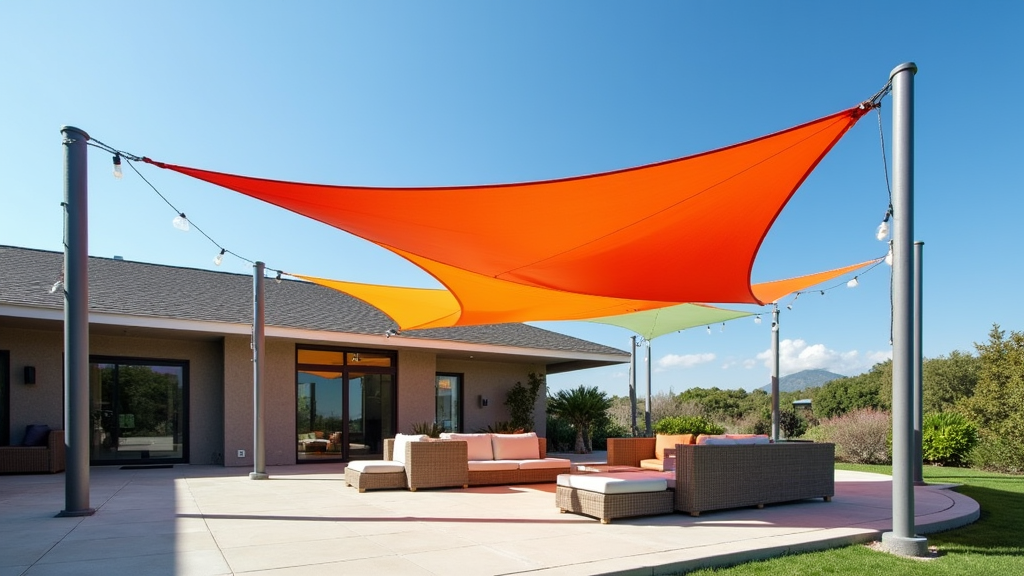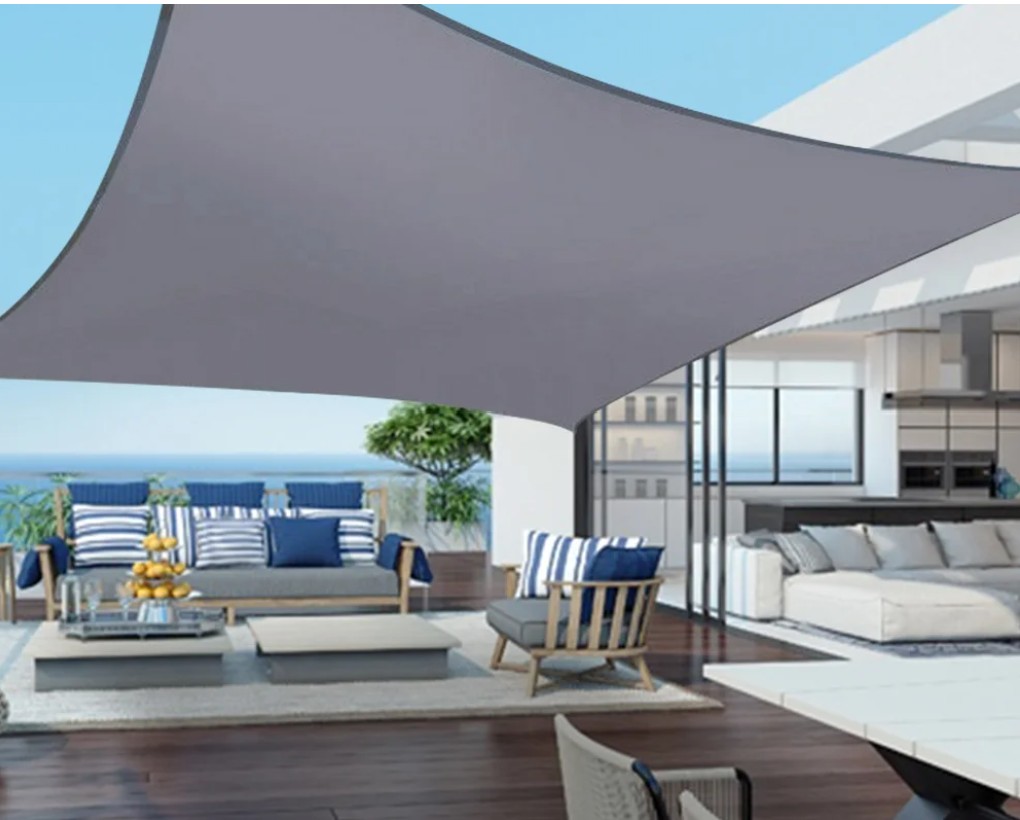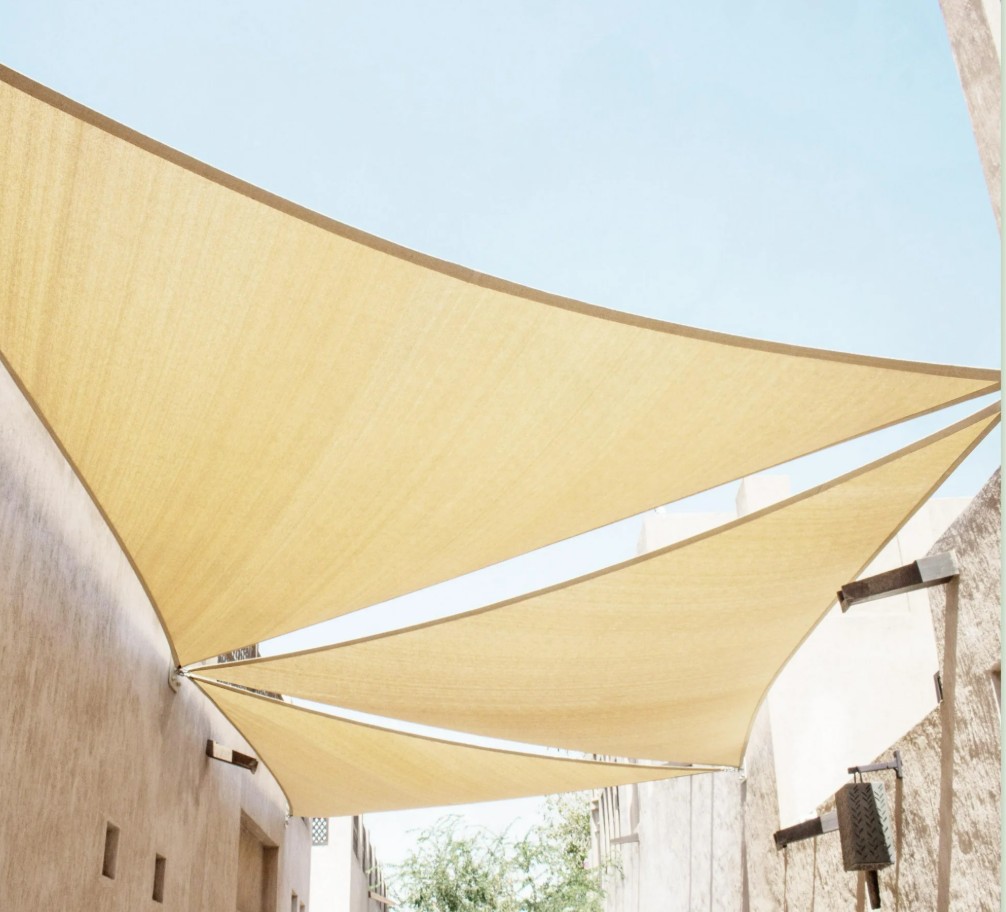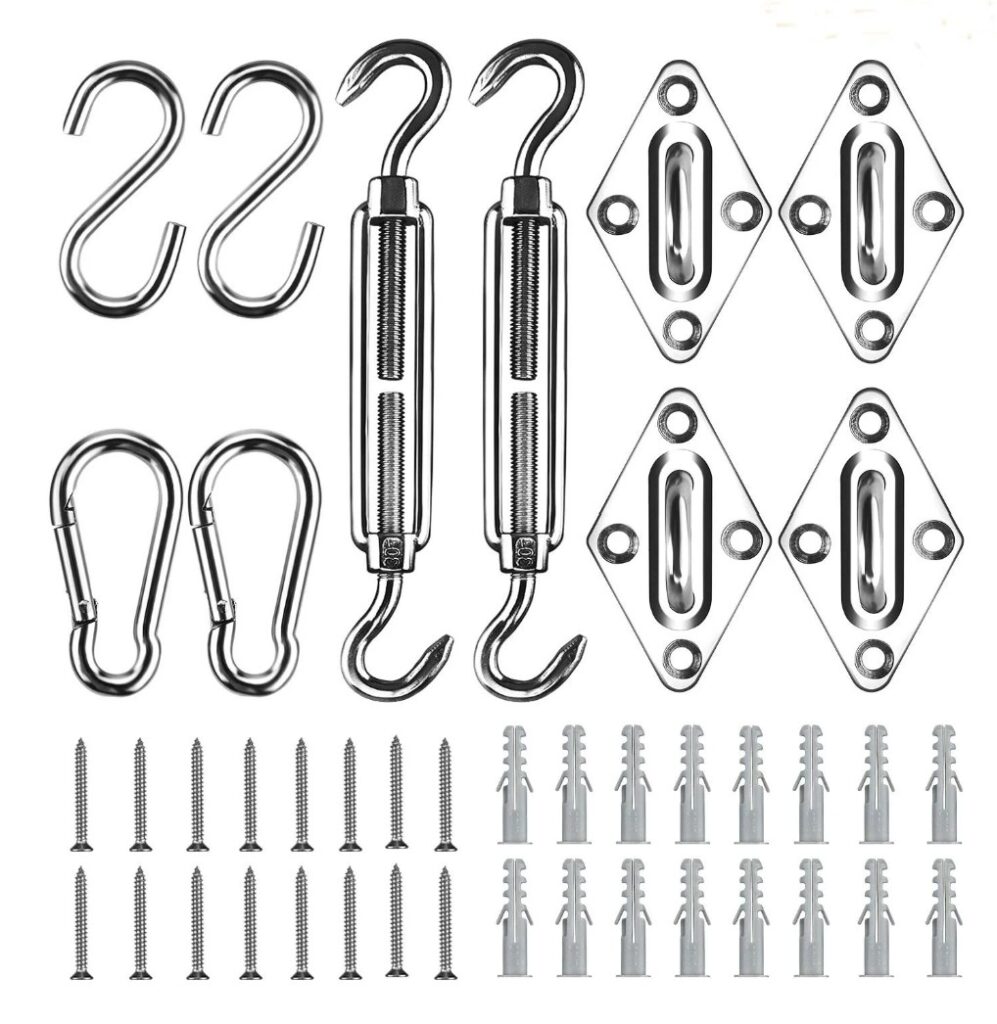Sun shade sails represent one of the most practical and stylish ways to enjoy the outdoors while staying protected from the sun’s powerful rays. They offer an affordable, modern, and versatile solution to shade issues, making them a popular choice for everything from small decks to spacious backyards. Whether you have a cozy patio or a sprawling garden, sunshade sails can be seamlessly integrated into your outdoor space.

Introduction
Sun shade sails have become a modern favorite among homeowners seeking both functionality and attractive design. Their lightweight yet durable fabric blocks harmful UV rays while still allowing refreshing airflow, keeping your outdoor area cool. Easy to install and customize, these sails work well on everything from small decks to large patios. In this post, we’ll check out the different colors, shapes, sizes, and mounting systems available, along with some useful maintenance tips. This overview is meant to help you choose the perfect shade solution for your space.
What Are Sun Shade Sails?
Sun shade sails are large fabric covers created to provide shade outdoors. Made from strong, lightweight materials that resist tearing and fading, they effectively block UV rays and reduce heat while still permitting a gentle breeze. Their modern look naturally fits into a variety of spaces, adding a clean and contemporary touch to any outdoor area.
The primary purpose of these sails is to create a cool, comfortable outdoor spot. The fabric’s design minimizes direct sun exposure and lets air circulate underneath, ensuring the area remains well-ventilated even on warm days. Additionally, their adaptable nature means they can be repositioned or removed based on seasonal changes or personal tastes.
Choosing the Right Shape
The shape of your sunshade sail plays an important role in its overall performance and visual appeal. Several popular shapes are available:
Triangle Shade Sails: These sails offer a sleek, modern appearance and work well for smaller areas or as part of a layered design. Often combined with other shapes, triangle sails help create dynamic, overlapping patterns while maintaining a minimalist look.
Rectangle and Square Sails: Ideal for larger spaces, these shapes provide extensive coverage. Their geometric design aligns neatly with patio or deck edges, creating a uniform look and ensuring even shade distribution.
Layered or Overlapping Designs: For those who appreciate creative layouts, layering multiple sails can yield a visually interesting and functional design. Overlapping configurations not only increase the shaded area but also add an artistic touch. Carefully choosing a shape that suits your area is vital for balancing performance and aesthetics in your outdoor decor.
Color Options & Their Benefits
Choosing the right color for your sunshade sail can change the mood and functionality of your outdoor area. There are a few key color categories to consider:
Light Colors: Shades like beige, white, and light gray reflect sunlight and keep your space cooler. They create a bright, airy feel that can visually expand an area. However, lighter hues may show dirt more easily, which means a bit more regular cleaning is needed.
Dark Colors: Options such as navy, black, and deep green absorb more heat but offer strong UV protection. These colors hide stains better and exude a sophisticated look. Although they may become slightly warmer, the excellent sun protection often makes them the favored choice for many.
Vibrant Colors: Bold hues like red, blue, or yellow inject personality and energy into your outdoor space. They can serve as decorative accents that add character without sacrificing effective sun protection when made with quality materials. Your final choice might depend on your style preferences and practical concerns like ease of maintenance.
Finding the Right Size for Your Space
Measuring your outdoor area accurately is essential before purchasing a sunshade sail. If the sail is too small, it will not cover the space adequately, whereas an oversized sail may cause issues with mounting and tension.
Many manufacturers offer standard sizes for typical patio and deck configurations. If your space has unique dimensions, custom-sized sails can be a better option. Be sure to measure the length and width as well as consider the pitch or tilt of your installation area. This attention to detail helps ensure that the fabric is properly tensioned to avoid sagging or uneven coverage.
Taking the time to measure accurately will result in a sail that provides consistent coverage and fits naturally into your overall outdoor design.
Mounting Systems & Installation Tips
Proper installation is key to making sure your sunshade sail remains secure and effective. There are some important points to keep in mind when setting up your sail:
Fixed vs. Adjustable Mounting Systems: Sails can be mounted using fixed systems such as poles or wall brackets, or with adjustable systems that let you change the sail’s tension and angle. Fixed mounts are straightforward and reliable, while adjustable systems allow for more flexibility if you need to change the sail’s position over time.
Anchor Points & Tensioning: Establishing secure anchor points is essential to keep the sail properly tensioned. Good tensioning not only gives the fabric a neat appearance but also promotes effective water runoff, preventing water pooling that could damage the material. Using turnbuckles or adjustable straps helps achieve the right tension, and careful placement of anchor points avoids overstretching the sail.
Best Practices for Longevity: For the longest lifespan, ensure that your mounting system withstands various weather conditions. Regularly check the tension and tighten any slack that may appear over time. Installing the sail at an optimal angle can also help reduce wind and rain impact, which in turn protects the fabric from premature wear.
Maintenance & Care
Maintaining your sunshade sail is generally simple because of its durable design. Regular care can prevent small issues from escalating into major problems.
Cleaning is typically easy. Many high-quality fabrics can be washed with mild soap and water to remove dust and dirt. Use a soft brush to gently scrub the fabric, taking care not to damage it. Once cleaned, allow the sail to dry completely before re-tensioning or taking it down.
During off-seasons or in extreme weather, proper storage can extend the life of your sail. Many experts recommend folding the sail neatly and storing it in a cool, dry place to protect it from prolonged exposure to harsh conditions. Periodically checking for signs of wear, such as fraying or discoloration, can alert you early to potential issues.
In areas with variable weather, adding measures like corner protectors or extra support lines may be worthwhile. These adjustments help maintain even tension and reduce stress on the fabric during heavy winds or rain, ensuring the sail continues to provide effective shade year after year.
Final Thoughts & Call to Action
The benefits of sunshade sails are clear. They combine modern design with practical function, offering a customizable solution for controlling sun exposure in many outdoor settings. With plenty of options in terms of shape, color, and size, a sail exists to fit nearly every space and style.
Choosing the right shape, paying attention to color selections, and measuring carefully can transform your outdoor area into a stylish retreat. Regular maintenance not only prolongs the life of the sail but also keeps your space safe and inviting in all weather conditions. In a world where outdoor living is increasingly popular, sunshade sails give a boost to your area by providing both comfort and visual appeal.
If you have any experiences or questions about using sunshade sails, feel free to share them in the comments. I would love to hear which shape, color, or mounting system you found most effective and how it has impacted your outdoor space. Thank you for reading, and enjoy turning your outdoor area into a comfortable retreat!





Sun shade sails seem like a fantastic way to enhance outdoor spaces while staying protected from the sun. I love how they offer both functionality and a modern aesthetic. I’m curious—how do different fabric materials compare in terms of durability and UV protection? Also, for those who have installed sunshade sails, do you find that certain colors last longer without fading? I’d love to hear others’ experiences with maintenance and longevity!
Herman,
As with any fabric used in outdoor shade or furniture cushions, you will have to keep it out of the sun or it will fade quickly. I would take my sun shade sail down when not in use to make it last longer.
The Sunbrella fabric is one of the best fabrics in outdoor material, followed by Olefin. Even these fabrics will fade if left out in the sun all the time. The wind will damage your sail also, so it is just good practice to just put up your sail just when you need it.
John
This is a fantastic and comprehensive overview of sun shade sails! You’ve covered all the key aspects, from choosing the right shape and color to installation and maintenance. The detail you provided about mounting systems and tensioning is especially helpful.
Considering the growing popularity of these sails, how do you think advancements in fabric technology, such as self-cleaning or even solar-powered options, might further revolutionize their use in the future?
-Phil
Phil,
I don’t think self-cleaning will ever happen. Keeping your sails clean and stored when not in use is the best way to make them last longer.
Solar retraction may be an option or some kind of solar lights may be an addition that may be in the future. The Sails are so light that they might not be the right thing for solar power or any additions to the framework.
John